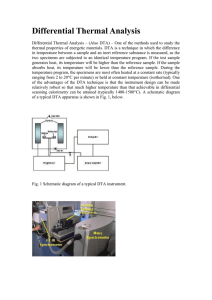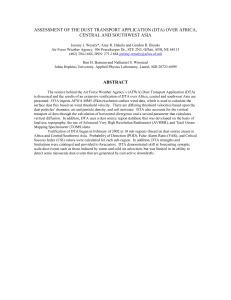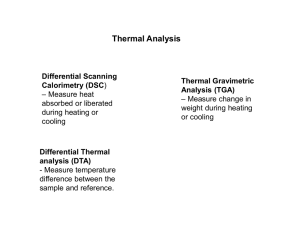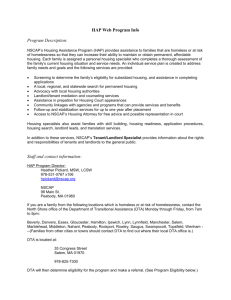Components of Income Aggregate: “National Panel Survey- Uganda 2011-2012”
advertisement
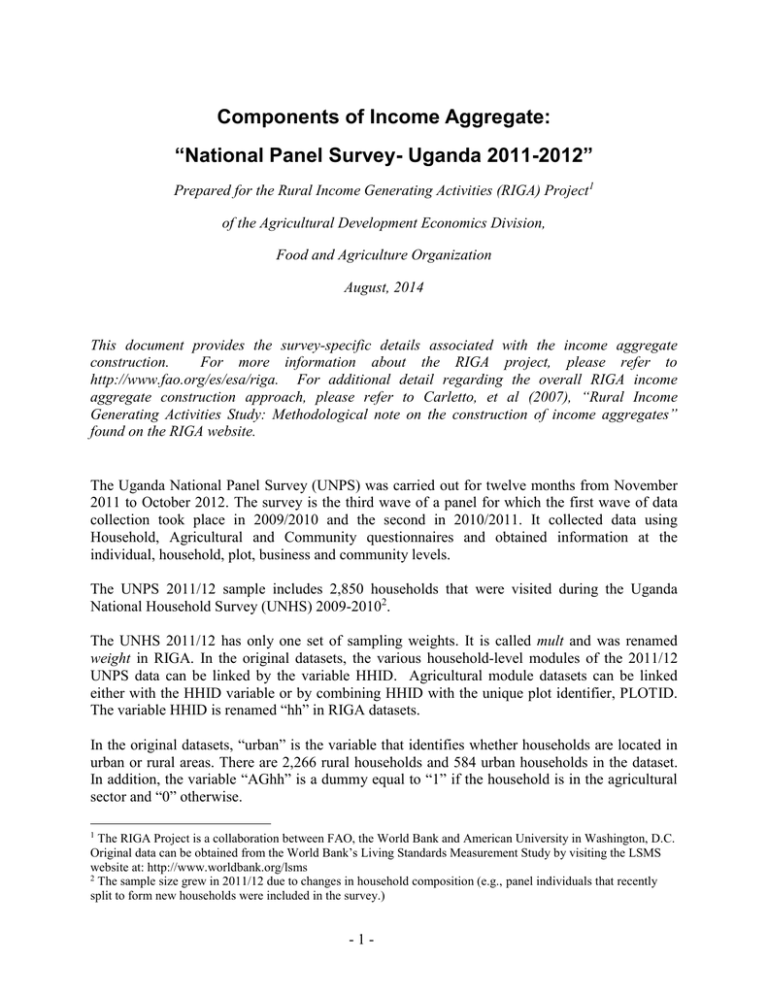
Components of Income Aggregate: “National Panel Survey- Uganda 2011-2012” Prepared for the Rural Income Generating Activities (RIGA) Project1 of the Agricultural Development Economics Division, Food and Agriculture Organization August, 2014 This document provides the survey-specific details associated with the income aggregate construction. For more information about the RIGA project, please refer to http://www.fao.org/es/esa/riga. For additional detail regarding the overall RIGA income aggregate construction approach, please refer to Carletto, et al (2007), “Rural Income Generating Activities Study: Methodological note on the construction of income aggregates” found on the RIGA website. The Uganda National Panel Survey (UNPS) was carried out for twelve months from November 2011 to October 2012. The survey is the third wave of a panel for which the first wave of data collection took place in 2009/2010 and the second in 2010/2011. It collected data using Household, Agricultural and Community questionnaires and obtained information at the individual, household, plot, business and community levels. The UNPS 2011/12 sample includes 2,850 households that were visited during the Uganda National Household Survey (UNHS) 2009-20102. The UNHS 2011/12 has only one set of sampling weights. It is called mult and was renamed weight in RIGA. In the original datasets, the various household-level modules of the 2011/12 UNPS data can be linked by the variable HHID. Agricultural module datasets can be linked either with the HHID variable or by combining HHID with the unique plot identifier, PLOTID. The variable HHID is renamed “hh” in RIGA datasets. In the original datasets, “urban” is the variable that identifies whether households are located in urban or rural areas. There are 2,266 rural households and 584 urban households in the dataset. In addition, the variable “AGhh” is a dummy equal to “1” if the household is in the agricultural sector and “0” otherwise. 1 The RIGA Project is a collaboration between FAO, the World Bank and American University in Washington, D.C. Original data can be obtained from the World Bank’s Living Standards Measurement Study by visiting the LSMS website at: http://www.worldbank.org/lsms 2 The sample size grew in 2011/12 due to changes in household composition (e.g., panel individuals that recently split to form new households were included in the survey.) -1- Regarding income from different sources, revenues and costs were disaggregated when such information was available. The disaggregated sources for each income component are summarized in output variables column of Table 1. The net variables and the data files included in the final total income aggregate (Income.dta) are in bold. Unless otherwise noted, all variables included in the aggregate income variable are net of costs. An average household size in Uganda is 5.3 persons3. All money amounts are in Ugandan Schillings (UGX). In 2012, the official exchange rate4 was UGX 2,177= $1.0. The income aggregates are calculated at the household level and all aggregates are annualized. Comments All calculations, data cleaning and data imputations are computed using Stata. In all sections, the raw data undergoes a transformation (it is annualized, aggregated, taken from person – household level, etc) before a check for outliers takes place. The industry codes used for classifying wage employment follow the United Nations International Standard Industrial Classification (ISIC) standards. Given the survey classification of each employed household member by industry, the employment sectors include: Agriculture and fishing, Mining, Manufacturing, Electricity and utilities, Construction, Commerce, Finance insurance and real state, Services and Unknown. The classification of non-farm enterprise activities into industries categories follows the same classification system as the employment section. Given these standards, the non-farm enterprise sectors include: (1) Agriculture, Livestock, Hunting and Fishing, (2) Mining, (3) Manufacturing, (4) Electricity and Utilities, (5) Construction, (6) Commerce, (7) Transportation, Storage and Communications, (8) Finance, Insurance and Real Estate, (9) Services and (10) Other Industries. For all sections, whenever information was available regarding the share of a business, enterprise, or any other income activity owned by the household, the income earned from that activity was weighted by the share owned by the household. A final outlier check is imposed at the end of the Aggregateincome.do file in which households with income shares from any given activity greater than or less than 3 (300%) are dropped from the final income aggregate. Participation and income share variables for all income components are included in the final income aggregate Note on crop prices Calculating crop prices from the agricultural module of the household survey required data transformation due to inexact reporting of quantities and total values of crops sold gathered during the field activities. Once the production prices were quantified in kilograms through the use of conversion factors, statistics resulted in unusually low mean and median values in round 2 compared to the unit price of round 1. Following consultations with the World Bank and the UBoS, we find that sales values reported during round 2 and used to compute round 1 unit prices 3 4 RIGA project calculations. Exchange rate used comes from the World Bank database, World Development Indicators 2013 -2- were by mistake divided by 100. Unit prices from round 2 were therefore multiplied by 100 in order to get the correct unit price, and therefore correct value of crop income. The programs that calculate each household’s income aggregate component are summarized in Table 1. Table 2 summarizes the results from the created income aggregate. -3- Table 1. Files and Variables generating the Rural Income Aggregate Do file Sample.do Prices.do Food.do Input data files RAWHH= household questionnaire RAWAG= agricultural questionnaire RAWHH \GSEC1.dta RAWHH \GSEC19.dta RAWHH \GSEC15B.dta RAWAG \AGSEC5A.dta RAWAG \AGSEC5B.dta RAWHH \GSEC15B.dta Output data files Main variables constructed Notes/Decisions price_purch_ea price_purch_district price_purch_region price_purch_stratum price_purch_urban price_purch_itemcd price_prod_ea price_prod_district price_prod_stratum price_prod_region price_prod_urban price_prod_itemcd price_fg_ea price_fg_district price_fg_stratum price_fg_region price_fg_urban price_fg_itemcd price_mrkt_ea price_mrkt_district price_mkt_stratum price_mrkt_region price_mrkt_urban price_mrkt_itemcd pricep_prod_ea pricep_prod_district pricep_prod_stratum pricep_prod_region pricep_prod_urban pricep_prod_itemcd foodexp foodexp_livst foodexp_crop foodpurch foodgift foodown Created median prices for each crop at different administrative levels (enumeration area, districts, stratum region, locality) using the reported expenditures in the consumption module and the reported sales from the agricultural module. Sample.dta price_purch_ea.dta price_purch_district.dta price_purch_region.dta price_purch_stratum.dta price_purch_urban.dta price_purch_itemcd.dta price_prod_ea.dta price_prod_district.dta price_prod_stratum.dta price_prod_region.dta price_prod_urban.dta price_prod_itemcd.dta price_fg_ea.dta price_fg_district.dta price_fg_stratum.dta price_fg_region.dta price_fg_urban.dta price_fg_itemcd.dta price_mrkt_ea.dta price_mrkt_dis.dta price_mkt_stratum.dta price_mrkt_region.dta price_mrkt_urban.dta price_mrkt_itemcd.dta pricep_prod_ea.dta pricep_prod_district.dta pricep_prod_stratum.dta pricep_prod_region.dta pricep_prod_urban.dta pricep_prod_itemcd.dta Foodown.dta Foodown_crop.dta Foodown_livestock.dta -4- . Other.do RAWHH \GSEC11.dta Rentagric.do Rentagric.do RAWHH \AGSEC2A.dta RAWHH \AGSEC2B.dta RAWAG \AGSEC3A.dta RAWAG \AGSEC4A.dta RAWAG \AGSEC3B.dta RAWAG \AGSEC4B.dta RAWAG \ AGSEC10.dta RAWAG \ AGSEC9.dta Cropincome.do Other.dta (it includes other incomes as income from properties and royalities) Rentagric.dta otherinc other cropexp1.dta (inputs) cropinc.dta (revenues, other exp) machincost.dta extensioncost.dta Cropincome.dta seedexp fertexp pestexp laborexp extensioncost machincost harvestv soldcropv transportexp storedv harlostv anifeedv foodprodv ownconsv cropincome1 cropincome2 livstborn livstsold livstexplab livstexpfeed livstexptreat livstexpother livstexp livstexp livstlost livstbyprodsold livstinc selfimp1 selfimp2 selfimp3 selfimp4 selfimp5 selfimp6 selfimp7 selfimp8 selfimp9 selfimp10 wge1_1 wge2_1 Livestock.do RAWAG \GAGSEC6AT1.dta RAWAG \GAGSEC6BT1.dta RAWAG \GAGSEC6CT1.dta RAWAG \GAGSEC7T1.dta RAWAG \GAGSEC8T1.dta livstinc.dta transfersliv.dta livstexp.dta livstexplab livstexpfeed livstexptreat livstexpother livstbyprod.dta Livestock.dta Selfemp.do RAWAHH\GSEC12.dta Selfemp.dta Employment.do RAWHH \GSEC8.dta Employment.dta -5- farmrnt Transfers.do RAWHH \GSEC11.dta Transfers.dta Aggregateincome .do Sample.dta Rentagric.dta Cropincome.dta Livestock.dta Employment.dta Other.dta Selfemp.dta Transfers.dta Income.dta wge3_1 wge4_1 wge5_1 wge6_1 wge7_1 wge8_1 wge9_1 wge10_1 wge1_2 wge2_2 wge3_2 wge4_2 wge5_2 wge6_2 wge7_2 wge8_2 wge9_2 wge10_2 transfersgross pubtransimp privtransimp agr_wge nonagr_wge crop1 crop2 livestock other selfemp transfers totincome1 totincome2 -6- Table 2. -7- Table 3. -8-
